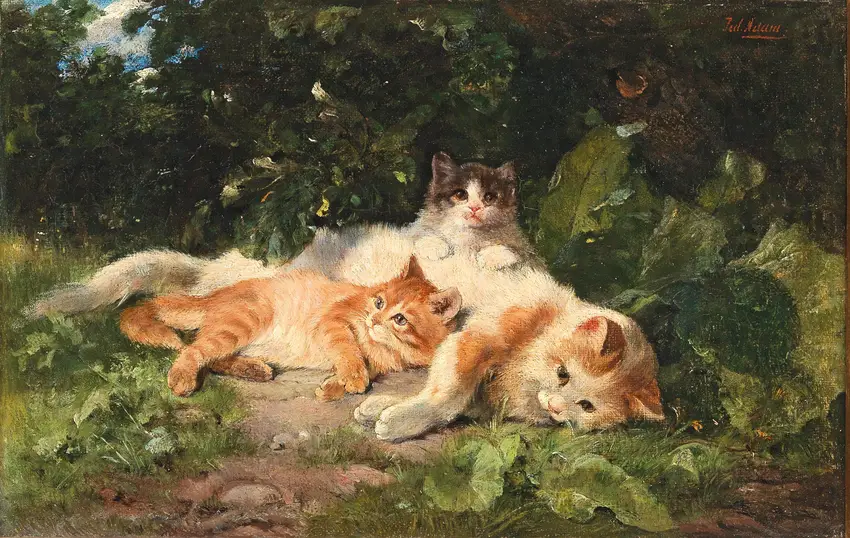Julius Adam the elder
Julius Adam the elder (1852–1913), German, A master of animal painting and genre scenes, this German artist captured the charm and vitality of domestic life with remarkable warmth and precision. Specializing in depictions of cats—often playful or mischievous—his work combined meticulous detail with a lighthearted touch, earning him the nickname "Katzen-Adam" (Cat Adam). Though less celebrated than some contemporaries, his ability to infuse everyday moments with humor and character made his art enduringly appealing.
Trained in Munich under the influential genre painter Carl Theodor von Piloty, he absorbed the realist traditions of the time but applied them to more intimate, whimsical subjects. His compositions often balanced technical rigor with narrative wit, whether portraying a kitten tangled in yarn or a brood of wide-eyed tabbies investigating a spilled milk jug. Beyond cats, he also painted dogs, rural scenes, and occasional portraits, though his feline studies became his signature.
While not a radical innovator, his work found a steady audience among bourgeois collectors who appreciated its accessible charm. Today, his pieces are held in regional German museums and occasionally resurface in auctions, charming modern viewers with their timeless, unpretentious joy. The subtle anthropomorphism in his animal scenes—hinting at human foibles without heavy-handed moralizing—remains their most distinctive quality.
Trained in Munich under the influential genre painter Carl Theodor von Piloty, he absorbed the realist traditions of the time but applied them to more intimate, whimsical subjects. His compositions often balanced technical rigor with narrative wit, whether portraying a kitten tangled in yarn or a brood of wide-eyed tabbies investigating a spilled milk jug. Beyond cats, he also painted dogs, rural scenes, and occasional portraits, though his feline studies became his signature.
While not a radical innovator, his work found a steady audience among bourgeois collectors who appreciated its accessible charm. Today, his pieces are held in regional German museums and occasionally resurface in auctions, charming modern viewers with their timeless, unpretentious joy. The subtle anthropomorphism in his animal scenes—hinting at human foibles without heavy-handed moralizing—remains their most distinctive quality.
-

Cat with her Kittens
Julius Adam the elder (German, 1852–1913)A tender portrayal of feline motherhood, where playful kittens and their watchful mother share a moment of quiet connection.
